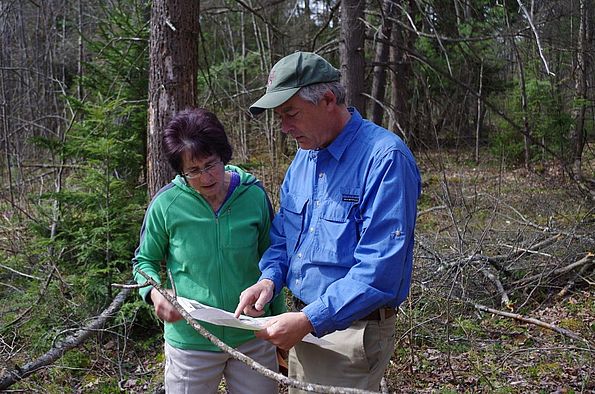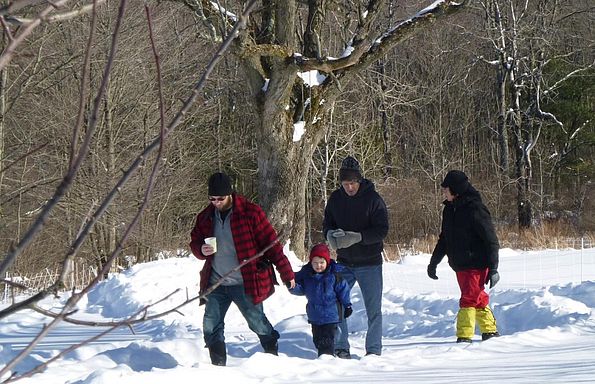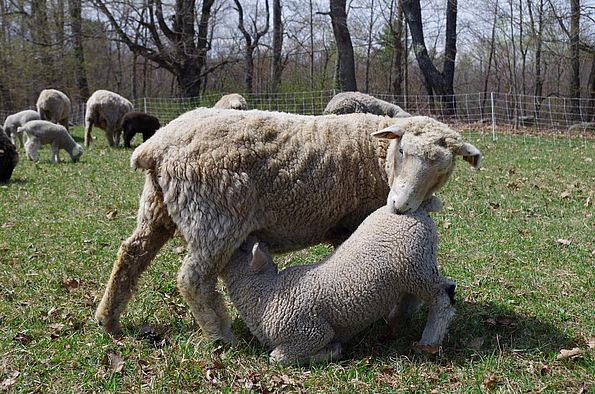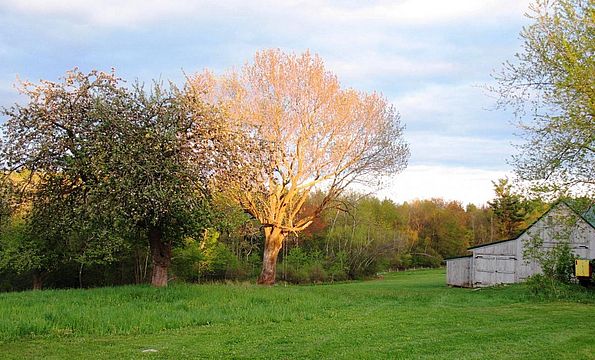Connected to the Land
It was the land that inspired Rise and John Richardson to move to the North Quabbin.
The couple was part of a circle of friends that came to the Mount Grace region from eastern Massachusetts beginning in the 1970s. “We were among the last of our circle to come out here,” says Rise. “But we kept visiting our friends in Athol and Royalston and saying: ‘this is the place.’ We always knew we would raise our kids in the country.”
The Richardsons and many of their friends joined a group of local parents that formed the Village School, where Rise (pronounced Ree-sa) is now the Director. “We all felt like kids could have more of a direct connection with nature as part of their schooling,” she explains. “Kids discover things outside. You don’t need playgrounds. You need woods, so they can climb trees, splash in puddles, and look at anthills.”
The Richardsons’ farm, on Narrow Lane in Phillipston, has hosted Village School students every spring. It’s also given Rise and John, a software engineer, a place where they can connect themselves to nature, growing their own vegetables, tapping sugar maples, and raising hay for their small flock of sheep.
The couple has now protected 133 acres of their land as part of the North Quabbin Regional Landscape Partnership’s Quabbin to Wachusett Forest Legacy Project—which has conserved thousands of acres of land in six towns. The Massachusetts Department of Conservation and Recreation’s Division of Water Supply Protection holds a Watershed Preservation Restriction on the Richardson land, which is split between the watersheds of the Swift and Ware Rivers—part of the water supply for millions of Massachusetts residents.
Most of the Richardson land is either woods or wetlands, serving to filter the Quabbin’s water and offering exceptional wildlife habitat. Protecting these woods also creates a bridge connecting two sections of the Phillipston Wildlife Management Area, making the forest habitat more resilient by preventing barriers to the free movement of native species.
Those kinds of connections are another important result of the Quabbin to Wachusett Project, which has added numerous wildlife corridors to knit together existing protected land thanks to a grant from the United States Forest Service’s Forest Legacy Program with additional funding support from the Bafflin Foundation, the Fields Pond Foundation, and the Community Foundation of North Central Massachusetts.
When the Village School classes return to the farm, students will tap maple trees, collect sap, stack firewood and watch lambing. This year, they’ll also get a chance to play in and explore the newest protected forest in Massachusetts.





